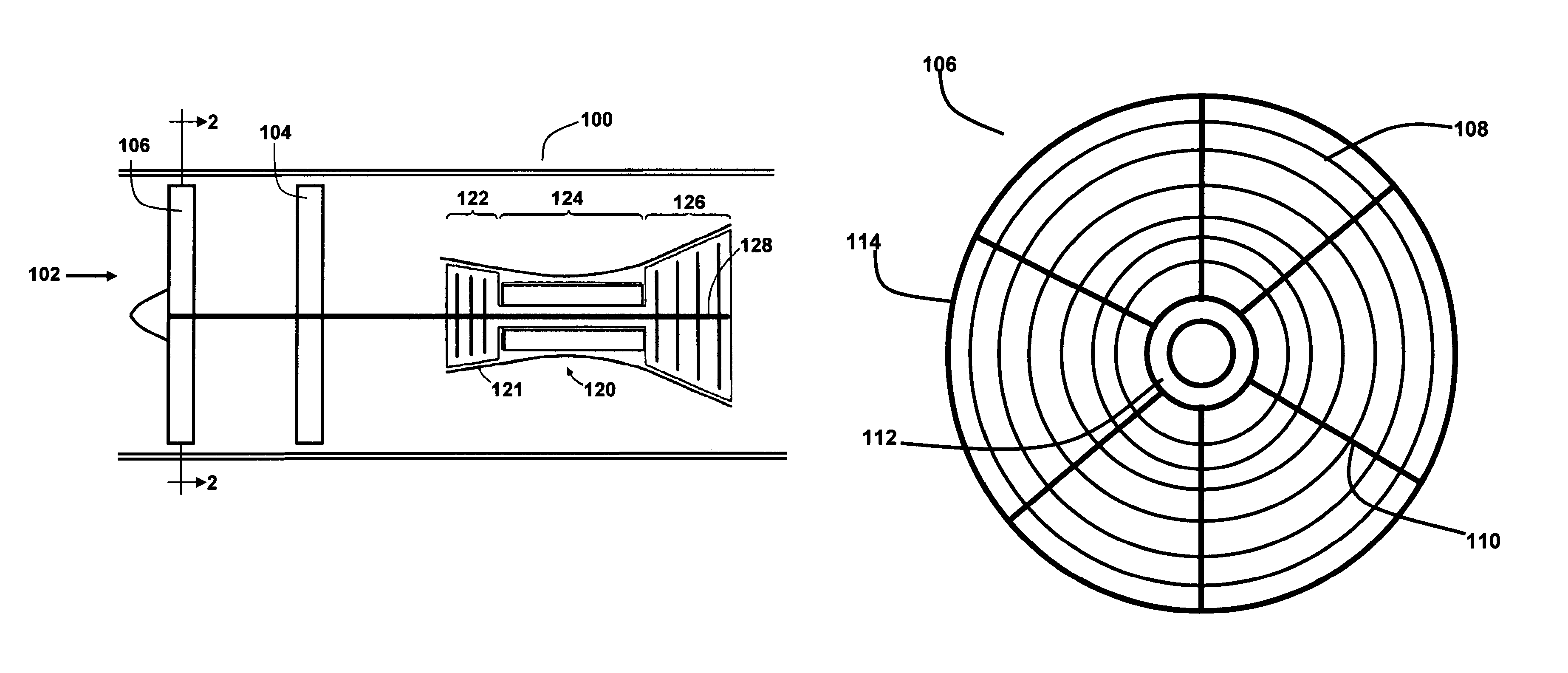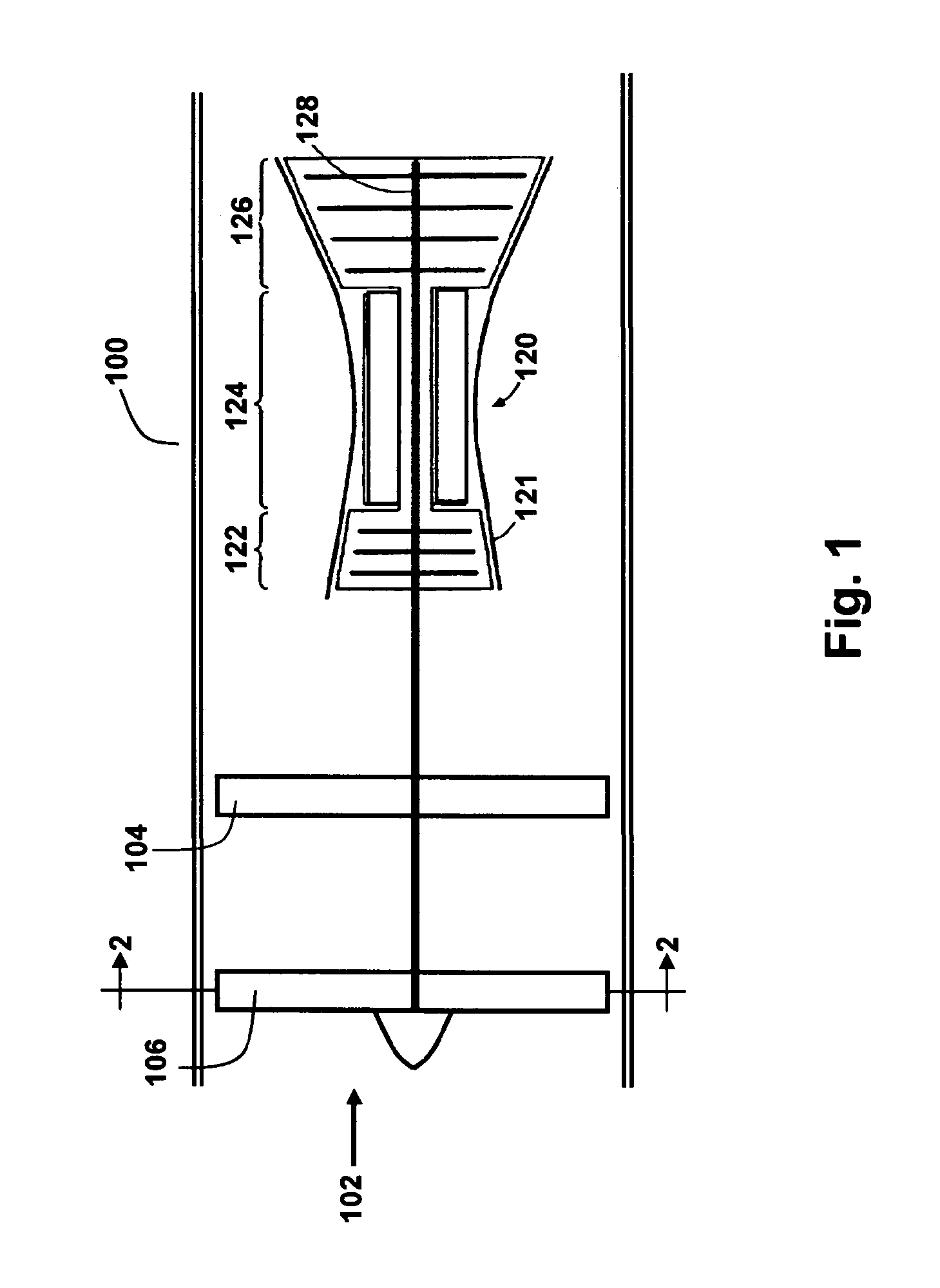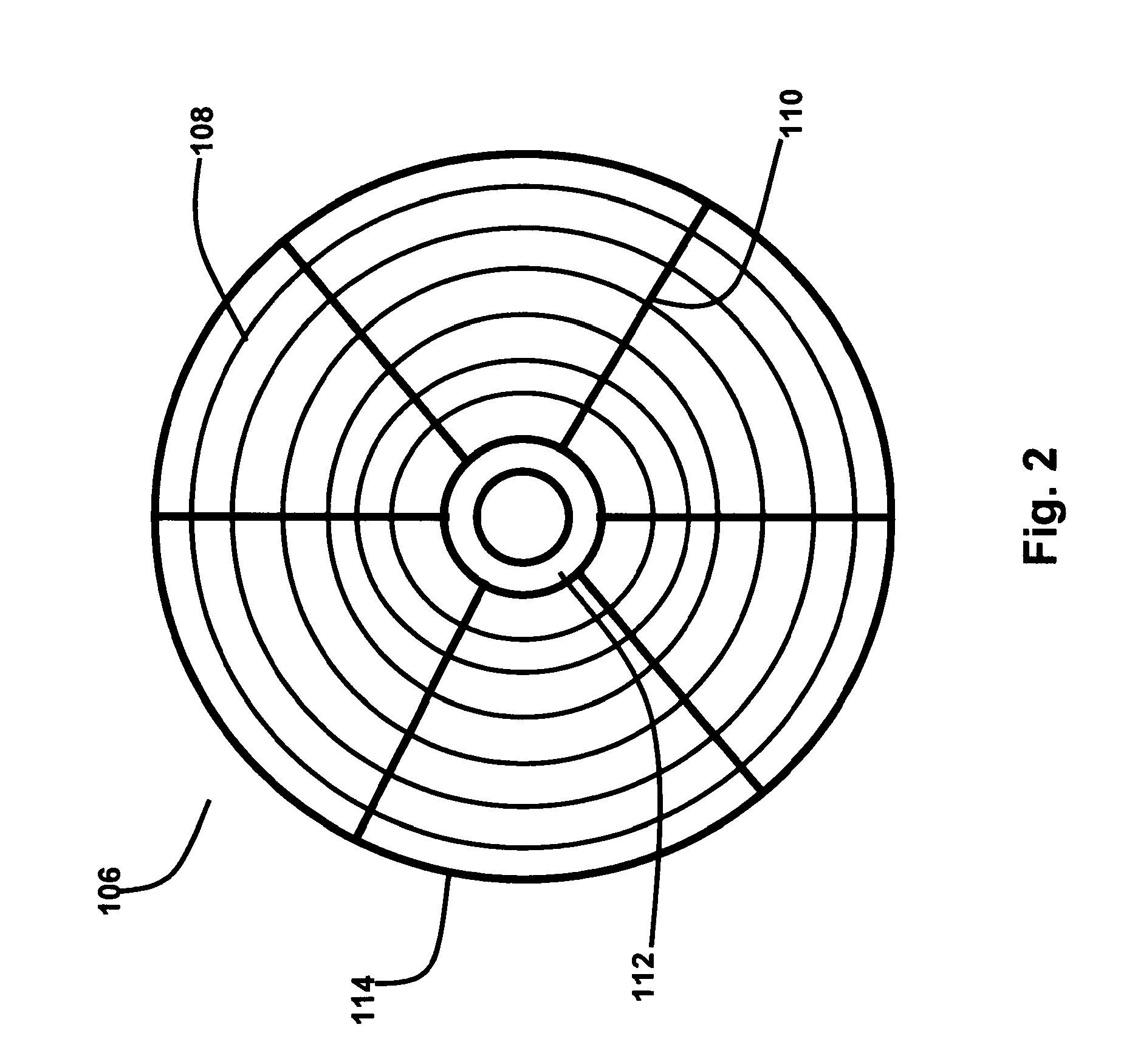Fragmentor for bird ingestible gas turbine engine
a gas turbine engine and fragmentor technology, applied in the direction of machines/engines, efficient propulsion technologies, combustion air/fuel air treatment, etc., can solve the problems of insufficient impact force, inability to ingest gas turbine engines, etc., to achieve safe ingested effect and low density
- Summary
- Abstract
- Description
- Claims
- Application Information
AI Technical Summary
Benefits of technology
Problems solved by technology
Method used
Image
Examples
Embodiment Construction
[0019]Bird ingestible gas turbine engine systems and related methods involving bird fragmentation are provided, several representative embodiments of which will be described in detail. In this regard, FIG. 1 is a schematic diagram depicting an exemplary embodiment of a gas turbine engine.
[0020]As shown in FIG. 1, gas turbine engine 100 incorporates an inlet 102 and bird fragmentor 106 that conduct intake air to a blade assembly 104. In this embodiment, engine 100 is a turbofan, with the blade assembly being configured as a fan. However, in other embodiments, the blade assembly could be a set of blades of a compressor of a turbojet, for example. Thus, the concepts described herein should not be construed as being limited to turbo fans.
[0021]Downstream of the blade assembly is located gas turbine core 120. Specifically, one such gas turbine core is used in this embodiment. However, in other embodiments, the gas turbine engine could be various other numbers and arrangements of gas turb...
PUM
 Login to View More
Login to View More Abstract
Description
Claims
Application Information
 Login to View More
Login to View More - R&D
- Intellectual Property
- Life Sciences
- Materials
- Tech Scout
- Unparalleled Data Quality
- Higher Quality Content
- 60% Fewer Hallucinations
Browse by: Latest US Patents, China's latest patents, Technical Efficacy Thesaurus, Application Domain, Technology Topic, Popular Technical Reports.
© 2025 PatSnap. All rights reserved.Legal|Privacy policy|Modern Slavery Act Transparency Statement|Sitemap|About US| Contact US: help@patsnap.com



